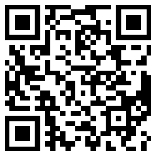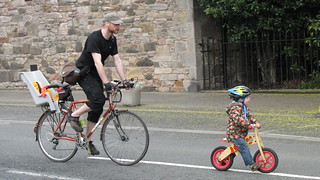So what we'd need is a few radar detectors, one to record distance from the kerb, one to record the position of vehicles to the rear and one to record the distance of on coming traffic to calculate whether there was a gap combined with the rear detector to decide whether A) the pass was "safe" and B) how much room was given?
CityCyclingEdinburgh Forum » Cycling News
New Ian walker study
(35 posts)-
Posted 12 years ago #
-
I suppose I was thinking that there's more to a pass than just the distance between the bike and the vehicle. The clothing might be influencing but the road conditions, especially oncoming traffic, so heavily constrain the available distance that can be given that to rely on it as the sole variable gives a really partial picture.
Not sure how you would measure it in technical terms but what I'd be interested in are things like:
* where they passed: on a bend, into oncoming traffic on a clear road etc
* speed moderation: did the vehicle reduce speed before the pass
* waiting: did the vehicle wait behind the bike before passing
* stand-off: the distance between the vehicle and the bike during any waiting
* the speed of the pass: There's a world of difference between a fast and close pass and a slow and close pass.So you might find, for instance, that the novice costume has more slowing down, waiting, greater stand off, and slower passing whereas the racer gets little change in speed and no waiting. But no difference in passing distance.
Posted 12 years ago # -
We don't know how often cars don't pass but we do know that with a rider latitude of 30cm, we're going to comment on variation in the mean passing distance of +/-4cm and think of that as a function of the rider's clothing and not their distance from the kerb.
Presumably the idea is that the rider wasn't systematically at a different distance from the kerb in each outfit, so with a reasonable number of data points it should cancel out.
However, I'm not so sure. Anecdotally the test rider found drivers to be hostile to some outfits relative to others. I find it a little difficult to imagine that their riding wasn't systematically different (more intimidation = closer to the kerb?) which would skew the measured results?
It would be interesting to know if, for instance, drivers held back for the novice, although they didn't give any more distance when they did pass. Not sure how you'd measure that though.
Posted 12 years ago # -
Hmm, I see we cross-posted a very similar final paragraph!
Posted 12 years ago # -
Thanks slow coach, that is what I was saying up-thread - POLITE works on a horse as combined with e yellow bib and helmet it makes the rider look like mounted polis
Posted 12 years ago #
Reply
You must log in to post.

 posts
posts
